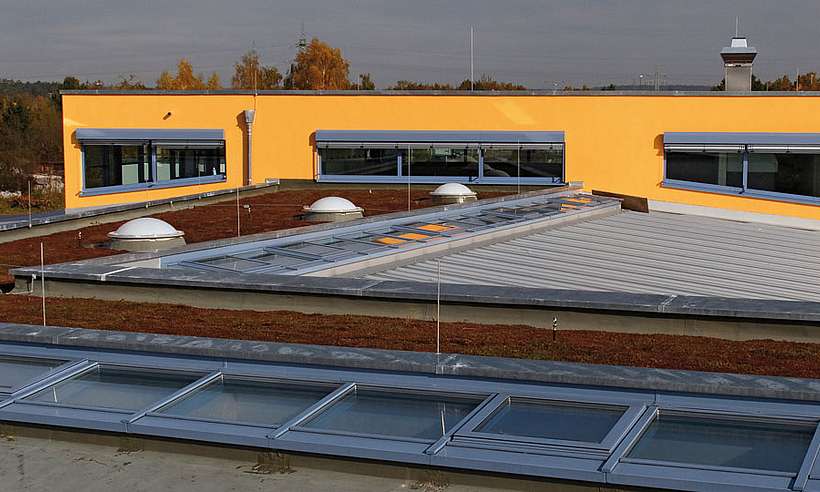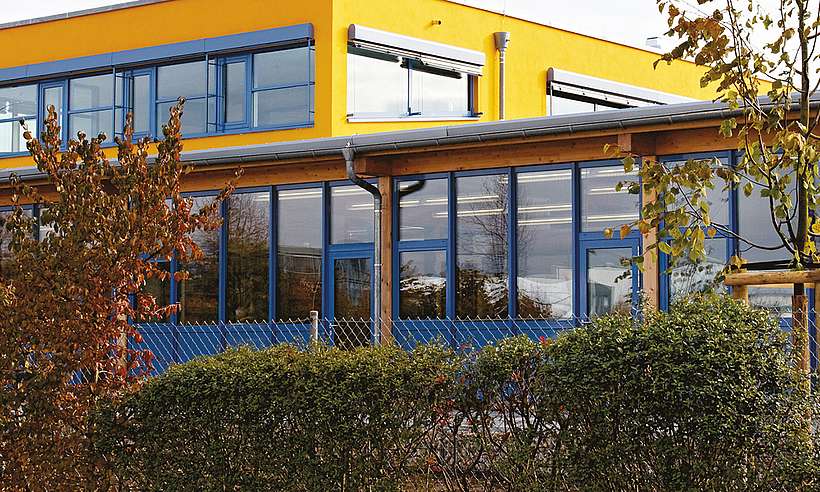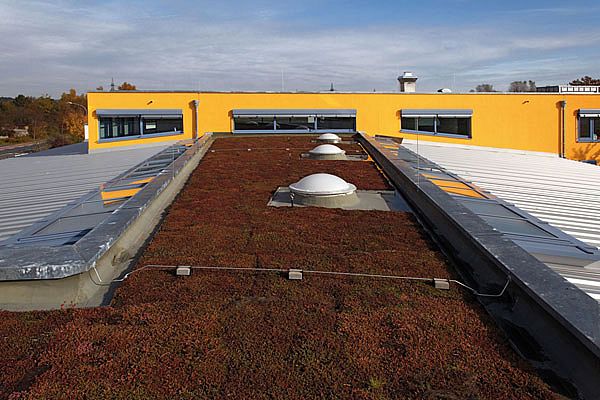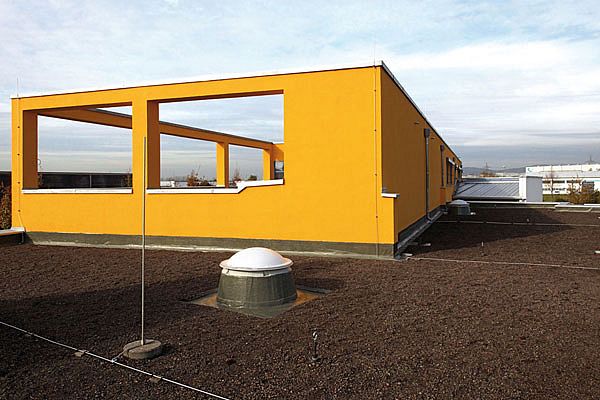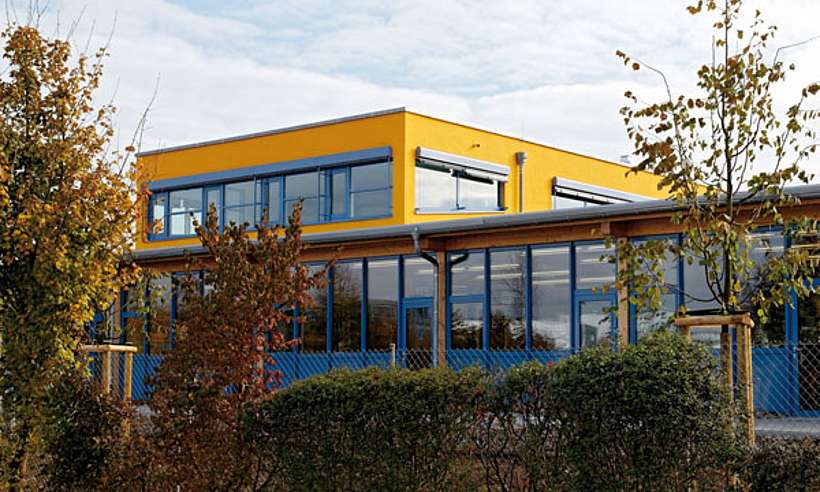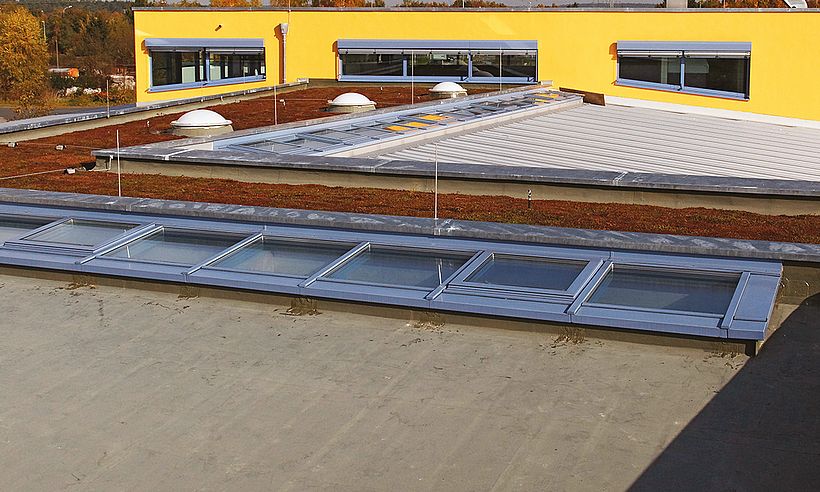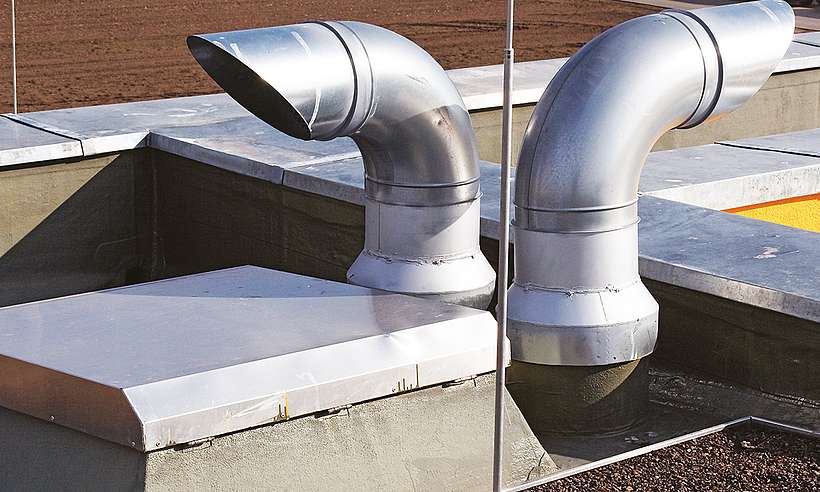Workshop beneath a green roof
The Rehabilitations Werkstätte (RehaWe) Bamberg, a workshop of the Bamberger-Lebenshilfe-Werkstätten, enables people with a mental illness or disability to participate in working life. The shelter, support and care of the disabled employees is ensured through qualified members of staff with technical and/or pedagogical training. Not only external orders are carried out at the facility in Gundelsheimer Strasse. There is also a bicycle service and an exclusive jewellery workshop where the creative designers produce individual pieces. The concept of the past few years has been so successful that the number of employees has risen from 30 to 90 and the number of available work places has also grown considerably. As the existing premises were bursting at the seams, an extension was added to the RehaWe building in 2009/2010.
Protected rooms
On the one hand, the building, designed by Mietusch & Partner, meets all the requirements of a functional production and workshop building and, on the other, great importance was attached to the harmonious design of various designated recreational areas. For this purpose, the planners designed the roofs as spatially separated units of varying sizes. The roof terraces are either protected from view between individual parts of the building or separated using architecturally designed wall elements. The areas above the workshops are fully designed as green roofs, thereby replacing the natural habitat lost to the building footprint.
Permanent waterproofing ensures peace of mind
The decision in favour of a green roof offers many advantages. It is not only nice to look at. From an ecological point of view, green roofs also offer huge benefits by regulating humidity, producing oxygen, binding dust and storing rainwater. One of the most important prerequisites for a green roof, the sight of which will be a pleasure for many years to come, is durable, reliable waterproofing. Due to the roof structure, the architects decided to invite bids for the provision of a liquid applied waterproofing system.
The main reasons for this were
- the connections to the parapets and rising structures, which amounted to several hundred running metres,
- the various substrates, including metal, bitumen and plastic,
- the high number of small skylight domes, ventilation elements and other detailing features. Using KEMPEROL, these are incorporated directly in the waterproofing without the use of preformed elements.
Since liquid applied waterproofing achieves a full-surface bond with the substrate, there is no risk of moisture penetrating and spreading through the substrate. The risk of fire and damage to plastic elements can also be neglected due to cold application techniques.
FLL and DIN tested
Helmut Amschler Flachdachbau GmbH, an experienced KEMPEROL partner, won the bid and decided to waterproof a total of 1,300 m² with odourless KEMPEROL 2K-PUR. The sustainable waterproofing also meets environmental demands and does so without the use of solvents, thereby maintaining the green nature of the roof. Roughly 80 percent of the utilised polyols (resins) are from renewable plant sources. KEMPEROL® 2K-PUR resists root penetration according to DIN 4062 for green spaces and is tested to FLL guidelines. According to master roofer Detlef Amschler, another economic advantage came to the fore when choosing the material: “This liquid applied waterproofing is applied directly to non-absorbent substrates without an additional primer. And this obviously helps to cut material costs and save time.”


